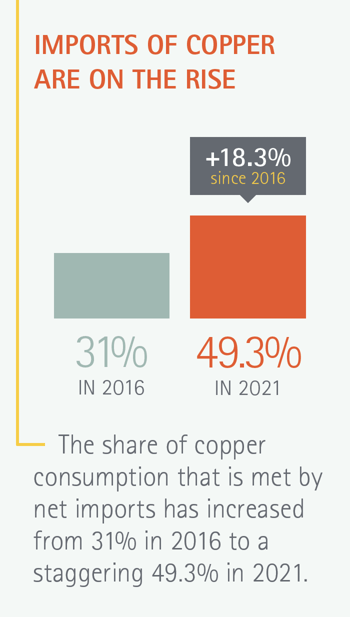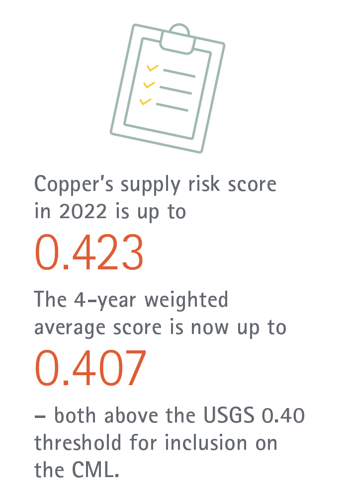
Help Urge Secretary Haaland to add Copper to the Critical Mineral List.
America’s future depends on copper, and it meets every component of the U.S. Geological Survey’s (USGS) definition of a Critical Mineral, yet it was not included on the 2022 Critical Mineral List.
New data shows that the supply risk to copper has grown dramatically since the USGS last calculated it in 2018, and shows no signs of slowing down. Help us by co-signing a letter urging Secretary of Interior Deb Haaland to exercise the authority given to her by statute to officially add copper to the Critical Mineral List immediately.
Add your signature by January 30 by 5pm ET.
America’s future depends on copper, and it meets every component of the U.S. Geological Survey’s definition of a Critical Mineral.



Copper is essential to economic and national security.
Copper plays a key role in energy technology, defense, consumer electronics, and other applications.
Copper's supply chain is vulnerable to disruption.


Copper and the Critical Mineral List
The U.S. Critical Minerals List, originally developed by executive order in 2018 and codified by the Energy Act of 2020, contains minerals deemed essential to the economic or national security of the U.S. and that have a supply chain vulnerable to disruption. The list was created to increase activity at all levels of the supply chain, including exploration, mining, concentration, separation, alloying, recycling, and reprocessing minerals. Since its inception, the list has become the shorthand way to refer to important minerals and is cited in dozens of legislative proposals intended to support those minerals through tax credits, government purchases, and permitting support.
Despite its clear criticality and dramatic uptick in import penetration from adversarial countries, copper was not included on the 2022 U.S. Critical Mineral List.
Because U.S. Geological Survey (USGS) data was considerably out of date upon the release of the 2022 Critical Mineral List, and the world has changed dramatically since then, the Copper Development Association hired a analyst to update the copper supply risk score with the most recently available data through the first half of 2022. With the new data, copper’s supply risk score in 2022 is up to 0.423 and the four-year weighted average score is now up to 0.407 – both above the USGS 0.40 threshold for inclusion on the Critical Mineral List.